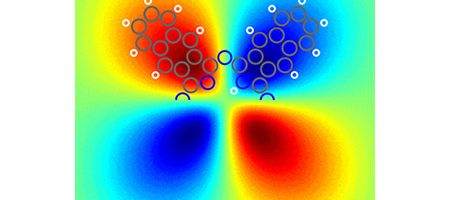Big Blue’s long had a fascination with the tiny, and now IBM scientists have for the first time been able to measure how charge is distributed within a single molecule.

The discovery could make it possible to image the charge distribution within functional molecular devices, with implications for solar photoconversion, energy storage and molecular scale computing devices.
The team directly imaged the charge distribution within a single naphthalocyanine molecule using what’s called Kelvin probe force microscopy at low temperatures and in ultrahigh vacuum.
“This work demonstrates an important new capability of being able to directly measure how charge arranges itself within an individual molecule,” says Michael Crommie, professor for condensed matter physics at the University of Berkeley.
“Understanding this kind of charge distribution is critical for understanding how molecules work in different environments. I expect this technique to have an especially important future impact on the many areas where physics, chemistry, and biology intersect.”
The technique could be used to study charge separation and charge transport in charge-transfer complexes, which consist of two or more molecules and which hold great promise for energy storage and photovoltaics.
When a scanning probe tip is placed above a conductive sample, an electric field is generated due to the different electrical potentials of the tip and the sample. With Kelvin probe force microscopy, this potential difference can be measured by applying a voltage such that the electric field is compensated.
The field’s stronger above areas of the molecule that are charged, leading to a greater signal, and oppositely charged areas yield a different contrast because the direction of the electric field is reversed.






